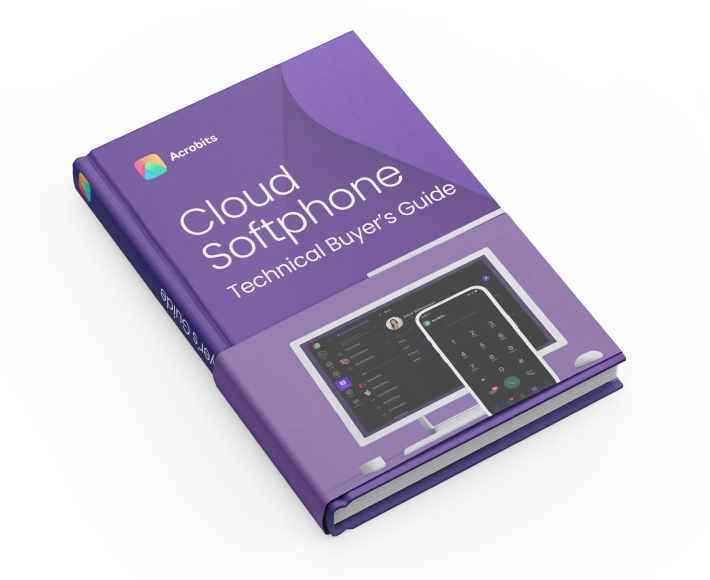What Is SIP Trunking?
Session Initiation Protocol (SIP). It’s the protocol that allows users to send unified communications over the Internet.
SIP trunking is a specific service that leverages SIP technology to connect traditional PBX (Private Branch Exchange) telephony networks to VoIP services. “Trunking” refers to the aggregation of multiple voice or data connections into a single link for more efficient communication.
It can be thought of as a virtualized version of analog phone lines, allowing on-premise PBX networks to interact with VoIP services and removing the dependence on traditional telephony services.
By replacing traditional telephone lines, SIP works with a business’s Private Branch Exchange (PBX) and allows the use of virtual phone lines that can dial phone numbers and make and receive phone calls over the Internet.
How Does SIP Trunking Work?
SIP trunking transforms traditional analog voice calls into digital data signals that gets sent online, linking business PBX phone systems to VoIP services. This conversion allows for multiple simultaneous calls and reduces costs for long-distance communications.
This virtualization allows for more concurrent calls, limited only by available bandwidth, and enables cost-effective long-distance and international calling.
SIP Trunking works over the Internet, using a business’s computer network to make and receive calls. It changes the sounds of a call into digital signals that travel online, instead of using old phone lines.
Management teams are interested in SIP trunking because it connects a PSTN network with on-site VoIP phone systems. This way, the cost of keeping legacy communication platforms is lower, and you get the chance to add in some modern features as well.
The Rise of SIP Trunking: A Glimpse Into Its Impact and Growth
SIP trunking is revolutionizing the way businesses communicate. According to a market report from Yahoo! Finance, the market for SIP trunking is expected to reach $23.58 billion by 2026, having just hit $14.75 billion in 2022.
This technology is responsible for the chat functionality, video conferencing, and voice calling features that employees and staff use daily, yet few genuinely understand how it works.
If your workplace uses a Unified Communications as a Service platform, then your service provider will handle all the technical details for you. However, it’s still helpful to know how the technology works at a basic level.
For an in-depth look at SIP check out:
What is Session Initiation Protocol, Everything You Need to Know
What Is a SIP Trunk Channel?
A channel is essentially any incoming or outgoing call. Every SIP trunk is capable of supporting multiple SIP channels. A business is capable of running on a single SIP trunk and scales its number of channels based on how many concurrent calls it expects to use.
What Does the SIP Trunking Architecture Support?
The features that SIP trunking enables are numerous and add to the appeal of working with a SIP trunking provider.
These are only a few examples of what some SIP trunking providers can offer. Get in touch with a few on your list to find out what else could be in store.
The Evolution of Business Calls: From PSTN to SIP Trunking
In the early days, companies would use a traditional telephone system known as the Public Switched Telephone Network, or PSTN. This network required a physical connection between both participants in a call and would involve copper wiring, physical phones, and phone numbers.
Digital communication has recently risen in popularity in the business world, and it’s actually separate from PSTN.
The idea of SIP trunking is to combine the two together so that you can make phone calls through digital software.
Why would this setup be necessary? While digital communication is more efficient, some customers and business users still use regular telephones from time to time, and it’s always in the company’s best interest to support an omnichannel communication experience.
Combining traditional PSTN with modern digital calling is the main idea behind SIP trunking.
How do you Choose a SIP Trunking Provider?
A SIP provider acts as the glue between your on-site IP-enabled PBX system and your traditional PSTN phone line. An experienced vendor knows how to tailor the system to the individual needs of your business rather than just throw you an “off the shelf” solution.
When looking for a service provider, look for these signs of a good one:
- Reliability: through redundant call routing or a failover system. You don’t want an outage or network failure to knock out your ability to collaborate.
- Data security: this is especially important today in the age of cybersecurity risks and data breaches. Business communication often involves the sensitive personal information of customers and staff, so make sure there are protections against fraud and cyberattacks.
- Data analytics: that can help you improve your customer service or optimize internal operations in real time.
- Technical support: through documentation or troubleshooting assistance. In case you ever have a problem, it’s good to know you’re in good hands.
Finally, don’t forget to think about the pricing model, specifically the contract you agree to when you sign up. What’s the monthly fee? Is there an upfront charge? And what does the cancellation policy look like?
7 Business Benefits of SIP Trunking
Explore SIP Trunking’s business benefits: multitasking on calls, affordability, enhanced features, and seamless integration with both digital and traditional communication systems.
- Cost Efficiency: SIP Trunking is more affordable than traditional phone systems, offering attractive rates for unlimited local or long-distance calling. This cost-saving aspect is enhanced by the ability to cut down on the overall expense of digital communication, making it an economically sensible choice for businesses looking to maintain or upgrade their communication platforms with modern features.
- Scalability: Businesses can provision new channels on-demand, ensuring they only pay for the lines they need. This feature makes scaling up as the business grows fairly inexpensive and efficient, allowing for the handling of numerous calls simultaneously without significant infrastructure investment.
- Versatility and Reliability: SIP Trunking can do a lot of things, like keep calls private, follow emergency call rules, be reliable, work with cell phones, and show how well it’s working. Businesses can talk to SIP Trunk providers to learn more and see what special things they offer.
- Modernizing Communication: Replacing traditional telephone lines, SIP works with a business’s Private Branch Exchange (PBX) and allows the use of virtual phone lines that can dial phone numbers and make and receive phone calls over the Internet. It does so by converting analog voice audio into a digital signal that gets sent online.
- Enhanced Collaboration: SIP can create, manage, and terminate communication sessions between parties in an IP network. Those sessions can be either two-way or multi-way for a conference call.
- Bridging Technologies: Management teams are interested in SIP because it connects a PSTN network with on-site VoIP phone systems. This way, the cost of keeping legacy communication platforms is lower, and you get the chance to add in some modern features as well.
- Advanced Features and UCaaS Integration: SIP trunking is such a mature technology, in fact, that service providers can package in special features now like network consolidation. That’s why SIP trunking is now the basis for UCaaS, a unified platform that offers various functionalities like instant messaging, video conferencing, integration with business tools and platforms, and employee status indicators, among others.
In Summary
SIP trunking connects your office phones to the internet for calls, making it cheaper and allowing more calls at the same time.
It turns voice into digital data for online calls. You can adjust the number of calls your business needs, and it also offers extra features like secure calls and emergency call routing.
This technology facilitates seamless integration with VoIP services, enhancing features and scalability for businesses. Its adoption is growing, with significant market expansion anticipated.
SIP Trunking offers numerous benefits including cost savings, scalability, enhanced collaboration, and advanced features integration, bridging traditional PSTN and modern digital communication methods, catering to the omnichannel communication needs of businesses.
When choosing a provider, look for one that’s reliable, keeps your data safe, offers helpful data reports, and has good support. Check their prices and contract details too.
Bring the Future of SIP Modern Communications Today, not Tomorrow
White-label SIP phones are capable of personalizing and customizing your real-time communications experience. This means more flexibility, more cost savings, and the ability to include the features that matter the most to you.
The right SIP app will save your business a lot of time and money, improve employee productivity, let you tap into detailed mobile analytics, and provide a seamless communications experience.
Want to learn more about our White-label SIP platform? Talk to our team today!







